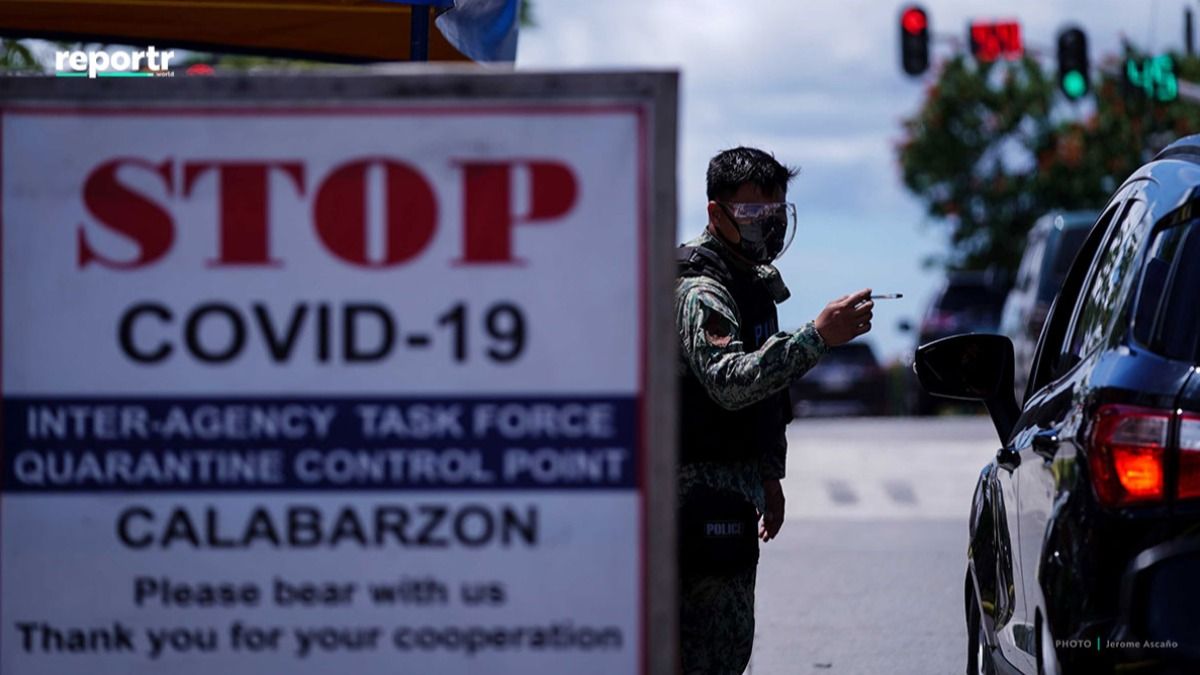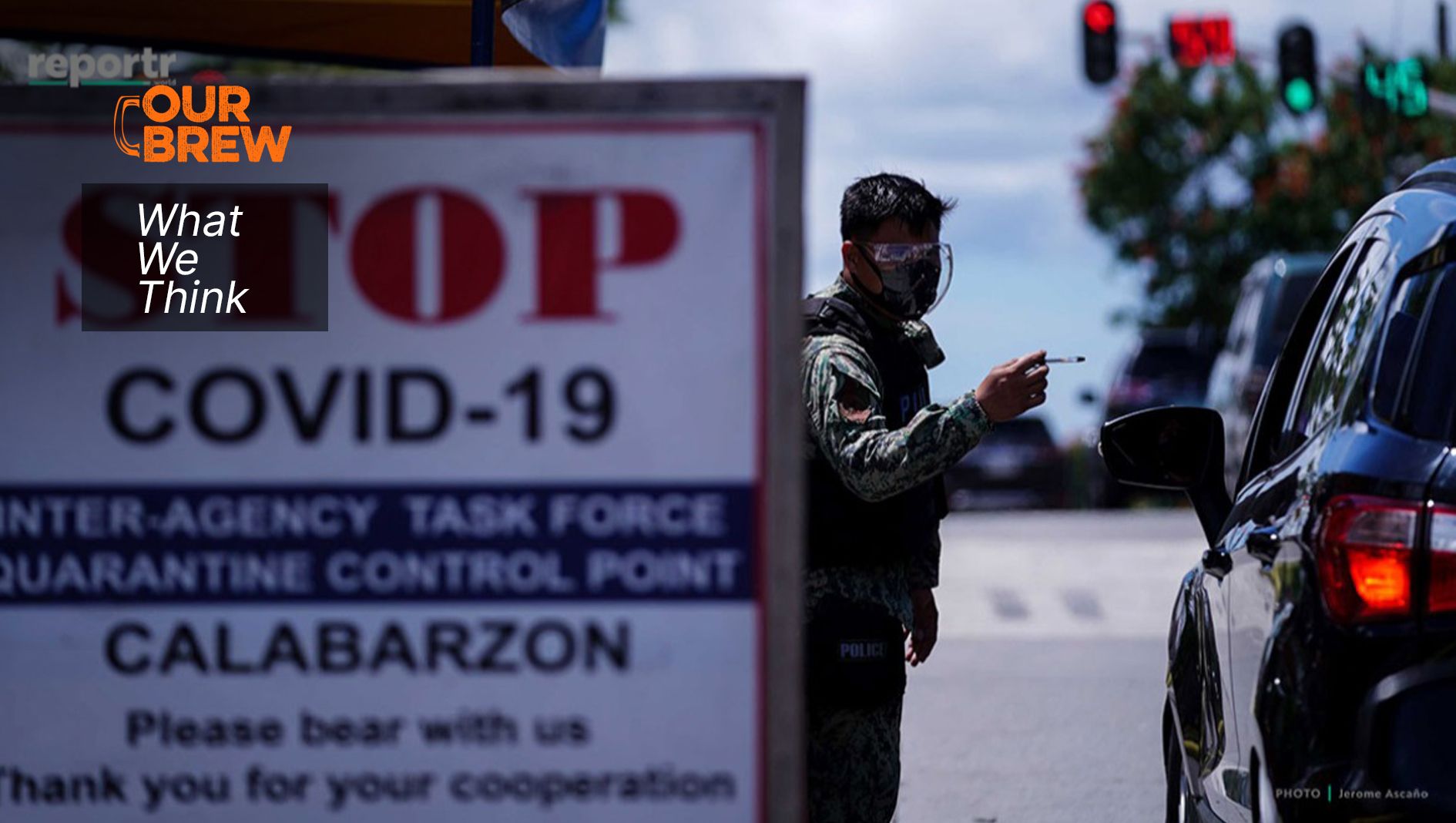
By Jing Montealegre
August 6, 2021 is another day which will ‘live in infamy’, second only to the March 15 Metro Manila lockdown last year and the subsequent lockdown of the entire island of Luzon. Intended to stop the upsurge of Covid cases triggered by the Delta variant, the latest ECQ restriction in the NCR will last for two weeks. Hopefully.
Many other areas in the country have been put under the same strict quarantine restriction. But with the kind of Covid response we’ve been getting from the authorities, we could expect hard lockdowns to be a recurring thing. It’s the go-to response of the government in this crisis.
We’re tired of hearing repeated calls for increased testing and contact tracing from all sectors – from doctors and health professionals, from the media, from senators, from just about anybody. We still have to see positive results: ramped-up testing to the desired 150,000 tests per day and dramatic improvement in our contact tracing. We’ve been stuck in the 40 to 50 thousand tests per day for the longest time now. And we have a Testing Czar who talks about vaccines and just about everything but never about testing in his TV interviews. We wonder why.
www.worldometers.info, which monitors and reports Covid cases worldwide, ranks the Philippines as number 22 among countries with the worst Covid cases, up from number 25 just three months ago. As of August 12 the Philippines has tested 156,114 per million of her population. Here’s how we compare with the 25 worst-hit countries in the world in tests per-million-population: USA (1,654,150); India (349,357); Brazil (256,888); Russia (1,168,461); France (1,693,717); UK (3,714,734); Turkey (828,060); Argentina (446,531), Cambodia (450,096); Spain (1,249,965); Italy (1,321,165); Iran (314,496); Germany (804,674); Indonesia (103,376); Mexico (68,241); Poland (504,215); South Africa (255,470); Ukraine (267137); Peru (476340); Netherland (946,323); Iraq (329,613); Philippines (156,114); Czechia (3,182,449); Chile (996,165); Canada (1,026,660).
Of the top 25 worst-hit countries only Mexico and Indonesia have tested less per-million-population than the Philippines.
Dr. john Wong, a medical adviser to the NTF, has said previously that managing the rise of Covid cases will depend primarily on “how fast each city and municipality can identify people with symptoms and test, isolate and quarantine them, and what percent of cases and close contacts complete their isolation and quarantine period, respectively; in indoor businesses with crowds, how well they are observing the 2-out-of-3 rule – ventilation, masking, social distancing; and how fast we can increase the pace of vaccination to 350,000 shots per day.”
While we’re pushing hard to get as many of the population vaccinated, we remain sadly deficient in testing and contact tracing. We could only guess this is due to limited resources: we don’t have enough money to ramp up free testing of exposed and vulnerable individuals, groups and communities, let alone fully fund extensive contact tracing.
But being poor is no excuse for incompetence and inefficiency. We have thrown away gains we’ve achieved last year through poor thinking and poor planning. Like a business vying for competitiveness and market share, we’ve launched ourselves into the market without a marketing plan - no marketing objectives, no marketing strategies, no monthly sales targets, and no evaluation and monitoring of these plans to see if we’re meeting stated targets.
The authorities assure us they’re on top of the crisis with their impressive PDITR Strategy which they flaunt every now and then. But how are we doing now? Was there a set of clearly-defined and specific objectives and timetable under PDITR? Who are accountable for success or failure?
The band aid solutions being prescribed, some new, some reapplied - such as border controls, curfews, liquor ban, etc. - will not bring down the number of cases in the country without the rigid application of aggressive pandemic control: active surveillance, testing, contact tracing, isolation, and vaccination.
So, what awaits us in the weeks after this lockdown if some key sectors of government continue to underperform and bureaucratic inefficiencies remain? A good doctor was probably right when she said early this year that lockdowns are useless without the “systemic changes” in the government’s Covid response, without the proactive and aggressive actions needed to defeat a wily enemy. Indeed, we have to bring the fight to the virus and not merely wait for it to come to us in our trenches, in our defensive perimeters and lockdowns. Speaking in warfare terms, we should be launching offensives against this enemy and not merely defend ourselves from attack by digging trenches and hiding behind sandbagged foxholes. That’s what lockdowns and mobility controls amount to. Let’s get cracking and take the fight to the enemy now.
It’s a downright bleak picture if this government couldn’t find the wherewithal to ramp up surveillance, testing and contact tracing. It’s like fighting a war blindsided for lack of intelligence. We do not know where the enemy is and when he will strike. Sanabagan.
If you liked what you just read and want more of Our Brew, subscribe to get notified. Just enter your email below.


Related Posts
Save Us from the ‘Chiztitution’
Jul 01, 2025
Welcome to the PR Presidency
Jun 18, 2025
What Happened to Sara’s Impeachment? ‘Na-tokhang sa Senado’
Jun 11, 2025